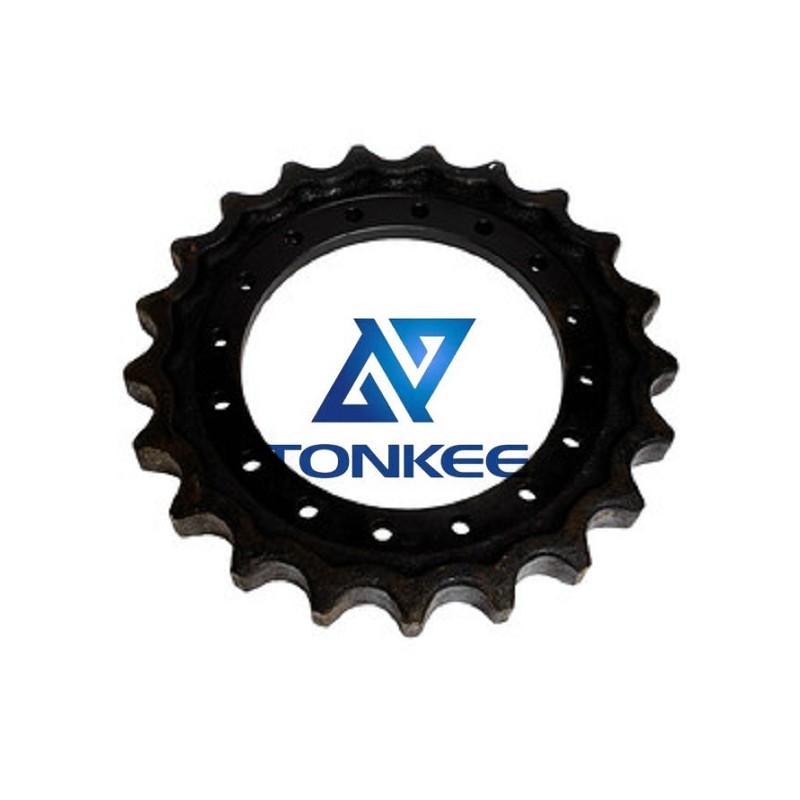
The final drive sprocket is engineered with precision and durability in mind.
It is typically made of high-strength steel or alloy to withstand the tremendous forces and stresses encountered during excavation and earthmoving operations. The 16 holes, also known as the big holes, are strategically positioned to engage with the corresponding bolts and fasteners on the final drive assembly, ensuring a secure and stable connection.
Tooth Configuration:
This sprocket features 21 teeth, which engage with the links of the excavator's track chain. The tooth configuration is carefully designed to optimize traction and minimize wear and tear on the tracks, ensuring efficient operation over extended periods.
Power Transmission:
The primary function of the final drive sprocket is to transmit power from the excavator's engine and hydraulic system to the tracks. This power transfer enables the excavator to move, dig, and perform a wide range of tasks. The sprocket's teeth mesh with the links of the track chain, creating a positive drive system that propels the machine forward or backward.
Compatibility:
The Hitachi Zaxis ZX EX135 FH135 and JCB JS130 Series Final Drive Sprocket is specifically designed to fit excavators within the ZX EX135 FH135 and JS130 Series. It is essential to ensure compatibility to maintain the excavator's performance and longevity.
Durable Coating:
To enhance resistance against corrosion, abrasion, and other environmental factors, the sprocket may be coated with a layer of protective material, such as paint or plating.
This coating extends the lifespan of the sprocket, reducing maintenance costs and downtime.
Maintenance and Inspection:
Regular inspection and maintenance of the final drive sprocket are critical for the excavator's optimal performance. This includes checking for signs of wear, damage, or misalignment. If any issues are detected, timely replacement or repair is essential to prevent further damage to the undercarriage system.
Importance in Excavator Performance:
The final drive sprocket's role in the excavator's performance cannot be overstated. It directly affects traction, speed, and maneuverability. A well-maintained and properly functioning sprocket ensures that the excavator can navigate various terrains and complete tasks efficiently and safely.
Safety Considerations:
Safety is paramount in heavy machinery operations. A damaged or worn sprocket can compromise the excavator's stability and control, potentially leading to accidents or equipment damage. Regular inspection and replacement of the sprocket, when necessary, contribute to a safer work environment.


